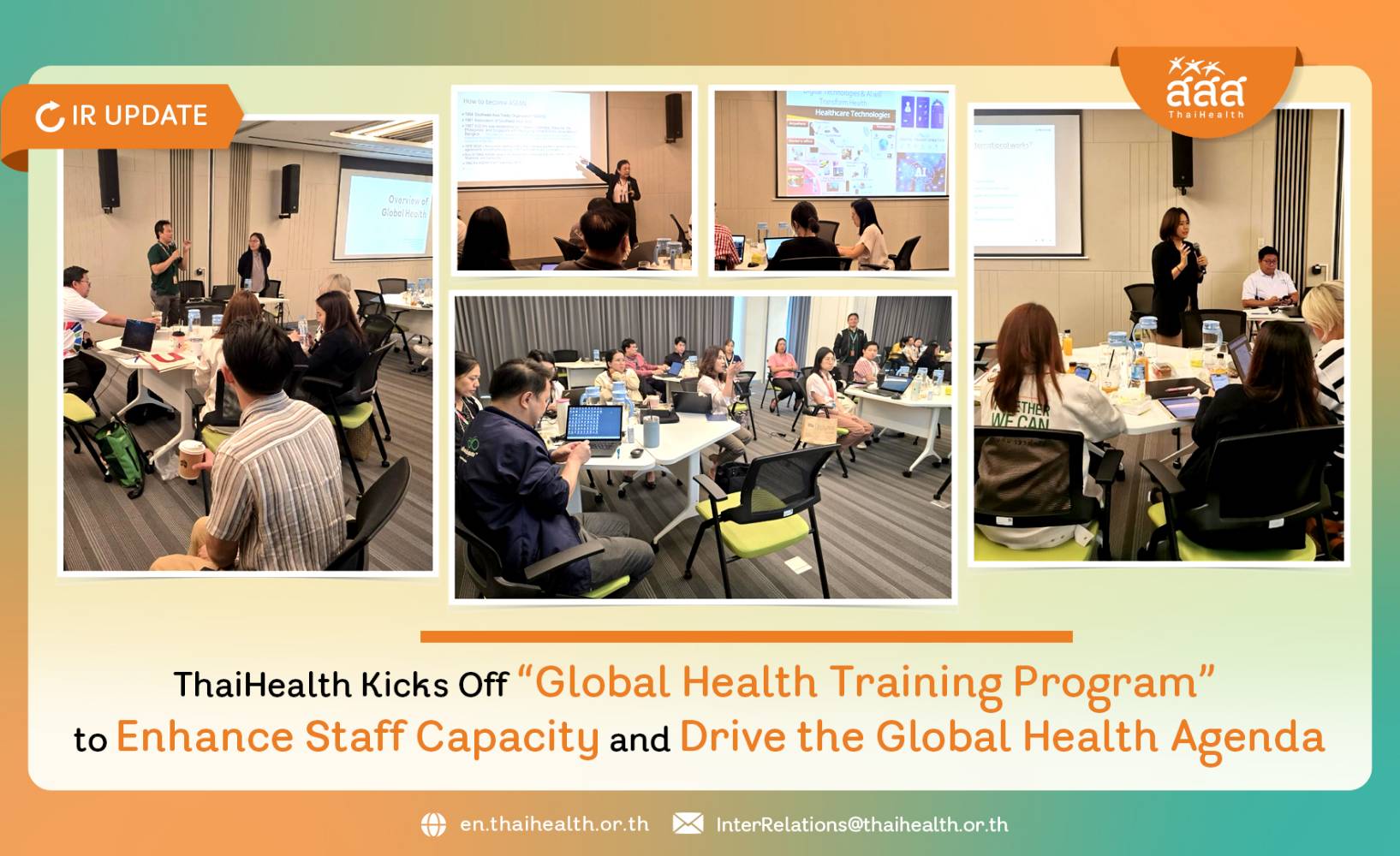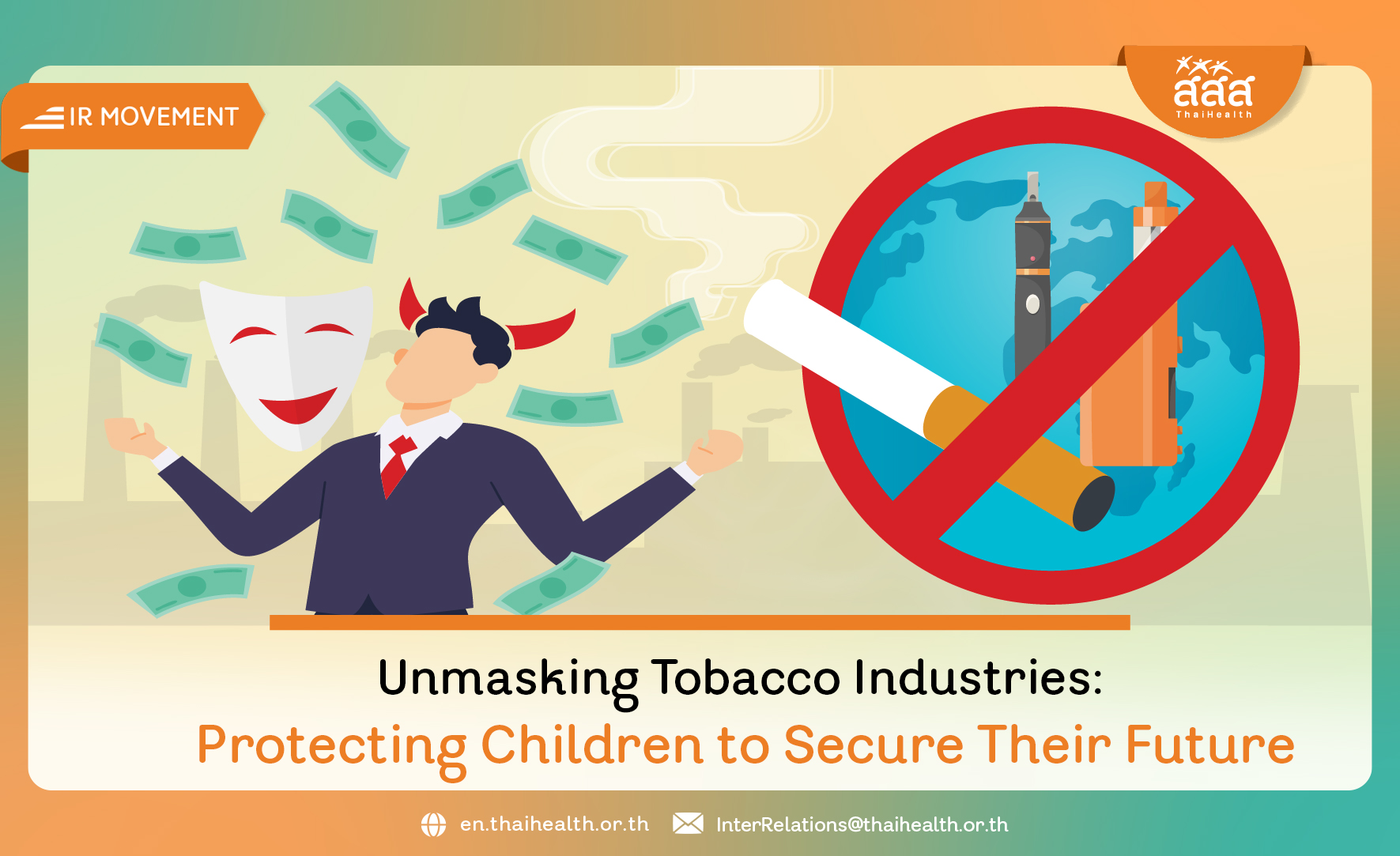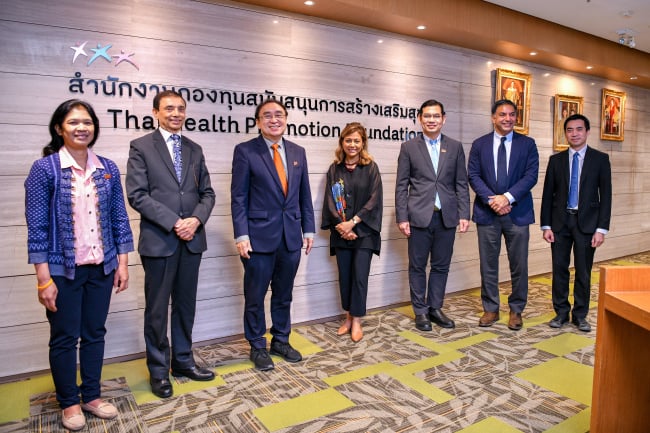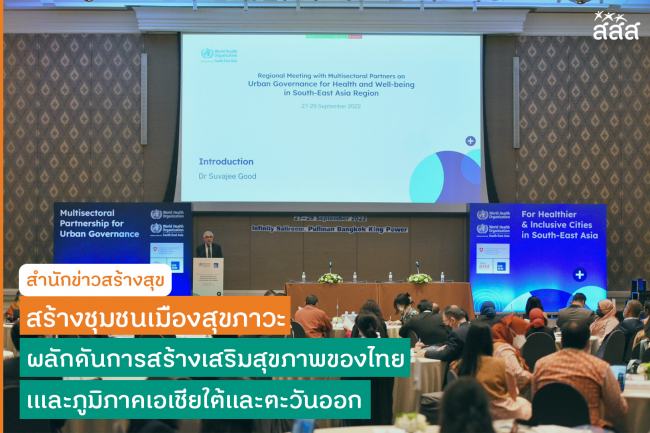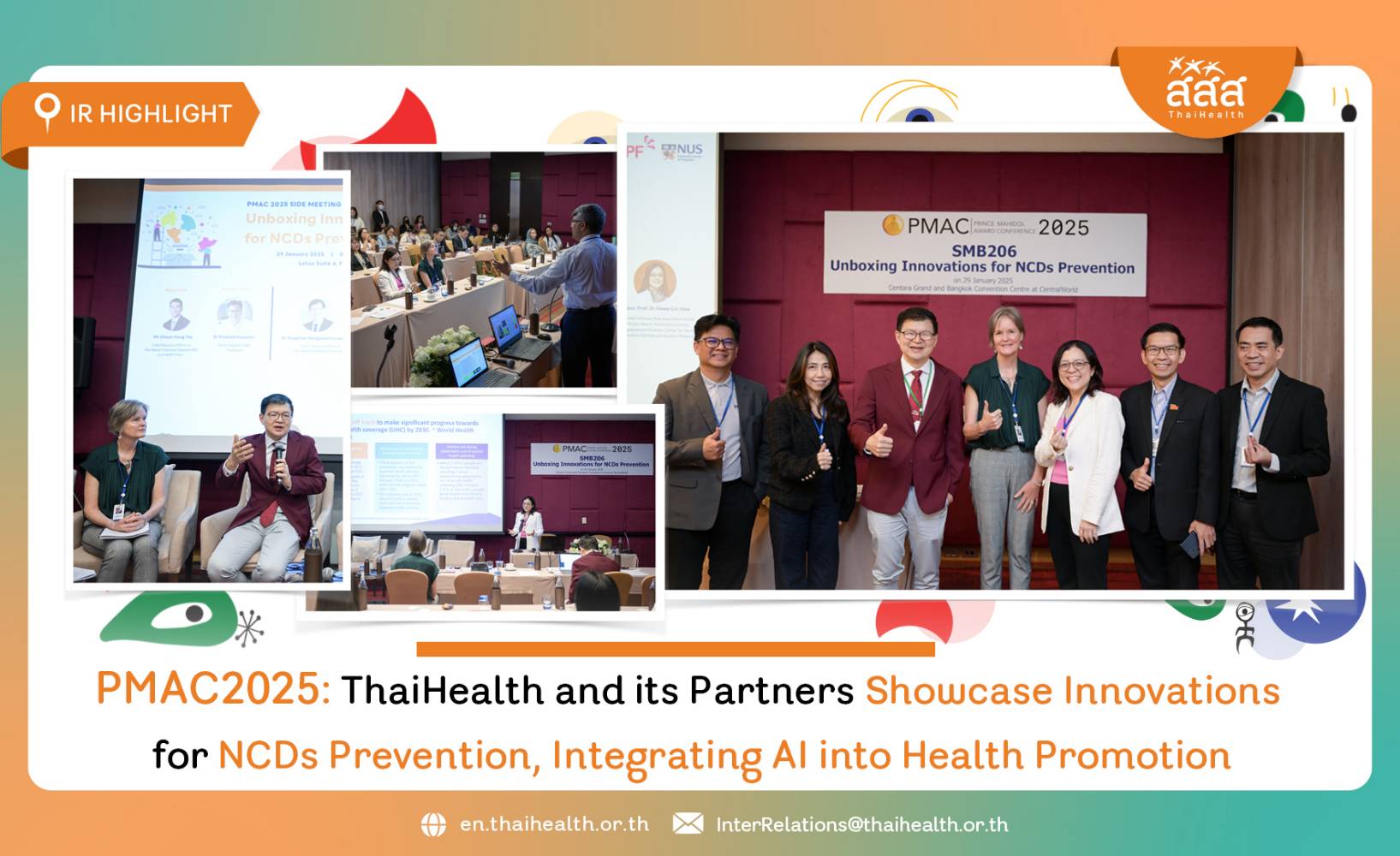
PMAC 2025: ThaiHealth and its Partners Showcase Innovations for NCDs Prevention, Integrating AI into Health Promotion
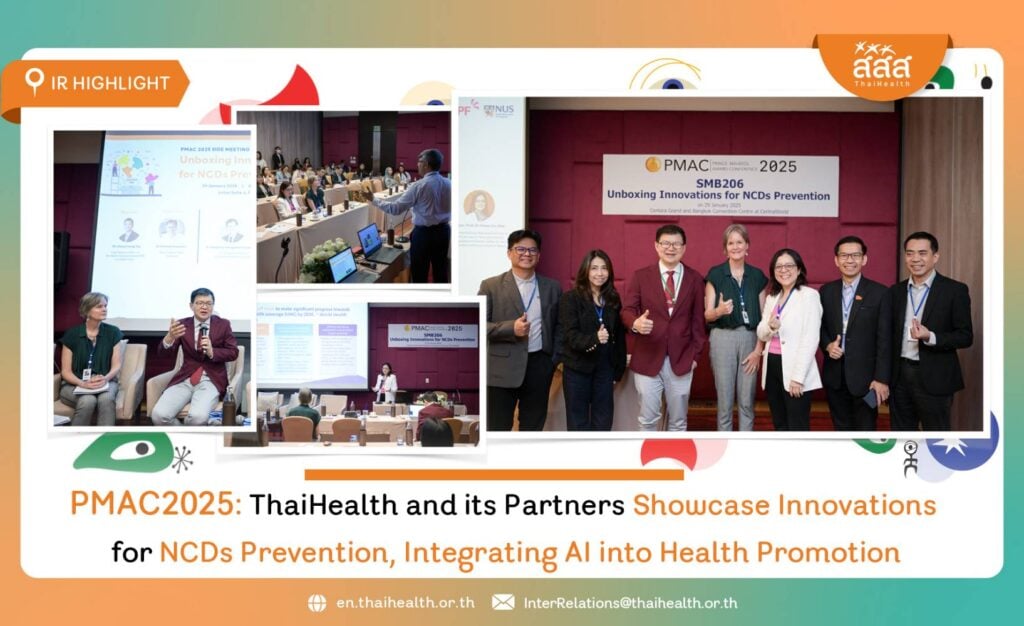
PMAC 2025: ThaiHealth and its Partners Showcase Innovations for NCDs Prevention, Integrating AI into Health Promotion
The side meeting on “Unboxing Innovations for NCDs Prevention”—part of the Prince Mahidol Award Conference (PMAC) 2025, under the theme “Harnessing Technologies in an Age of AI to Build a Healthier World”—was led by Dr. Pongthep Wongwatcharapaiboon, M.D., CEO of the Thai Health Promotion Foundation (ThaiHealth); Mr. Tay Choon Hong, Chief Executive Officer of the Health Promotion Board (HPB), Singapore, and Chair of the International Network of Health Promotion Foundations (INHPF); Dr. Carolyn Wallace of Victoria Health Promotion Foundation (VicHealth); Dr. Karthik Adapa, Regional Adviser for Digital Health at the WHO-South East Asia Regional Office; and Assoc.Prof. Wee Hwee Lin, Director of the Center for Health Intervention and Policy Evaluation Research (HIPER) at the Saw Swee Hock School of Public Health, National University of Singapore (NUS).
Non-communicable diseases (NCDs) remain as a pressing global health issue. Inequitable access to prevention and treatment has exacerbated the issue. Nevertheless, technology is emerging as the key to bridging these gaps by enabling easier access to health information and empowering individuals to take an active role in managing their own health.
The side meeting “Unboxing Innovations for NCDs Prevention” aimed to delve into how technology can be leveraged to promote health in disadvantaged communities by showcasing real-world examples of successful technology integration. It sought to inspire new ideas while inspiring participants with the potential and possibilities of new technological advancements to address health disparities in the future.
The session moderator Dr. Prakasit Kayasith, Senior Assistant CEO and Acting Director of Partnership and International Relations, ThaiHealth, summarized the discussion by emphasizing the substantial shifts in risks and behaviors. Many countries and organizations have sought to adapt their strategies by integrating technology to streamline operations, enhance accuracy, and increase efficiency. Mr. Tay Choon Hong, CEO of HPB and Chair of INHPF, presented the overview of Singapore health policies, the integration of technology into healthcare, as well as monitoring, evaluation, and cost-effectiveness analysis. This contributed to the development of various initiatives, one of which is the Medical Hub. The hub not only enables individuals to access their health data but also serves as a local health service center where they can consult on their data to design personalized activities or behaviors. Additionally, he introduced the Healthy 365 application, which allows users to select activities based on their interests or health goals. It also features updates on health programs from public and private agencies, uniting efforts to increase physical activity and promote sustainable community health management.
Subsequently, Dr. Karthik Adapa, Regional Adviser for Digital Health at the WHO-South East Asia Regional Office, has advocated for countries to promote the exchange of cancer data through digital platforms to enhance the efficiency of diagnosis and treatment follow-up. He collaborated with the Ministries of Public Health in member countries to develop cancer screening programs, such as those for cervical cancer, breast cancer, and colorectal cancer.
Additionally, he informed that efforts have been made to develop digital toolkits specifically designed for primary care medical personnel to facilitate rapid and efficient screenings and patient referrals. A key aspect of this lies in the mainstreaming of digital health within healthcare systems, encouraging the integration of technology into primary healthcare services in a universal health coverage system, to address disparities in accessing healthcare services.
Meanwhile, Dr. Carolyn Wallace from VicHealth highlighted the role of utilizing appropriate technology in communities. She specifically emphasized collaborating with community connectors to enhance the scale and impact. Examples include using Facebook and TikTok to engage children and youth, organizing events to foster knowledge sharing and empowering the young generation. In addition, “community leaders” contribute to driving initiatives or events to reach a wider and more diverse audience.
On the other hand, Assoc.Prof. Wee Hwee Lin, Director of HIPER at the National University of Singapore, stressed the importance of evaluation frameworks. She pointed out the need to assess the safety and value of various technologies. These frameworks enable a comparison between budget allocation and the value of healthcare services.
Finally, Dr. Pongthep Wongwatcharapaiboon, M.D., CEO of ThaiHealth, prioritized quality of life. He underscored that before integrating technology or health data into communities, it is essential to raise awareness about the importance of caring for their health. This can be achieved by providing relevant information, such as healthy ageing. Once people recognize the value of health management, they realize the benefits of good health for society. Real data on health impacts—such as mortality rates or declining average life expectancy—can help foster this awareness. In addition, ThaiHealth has developed personalized health-supporting tools, which allow individuals to take better care of their health. It also organizes events and activities to promote exercise and healthy living for Thai people. Fostering understanding of this concept within communities will, therefore, contribute to sustainable health promotion.


